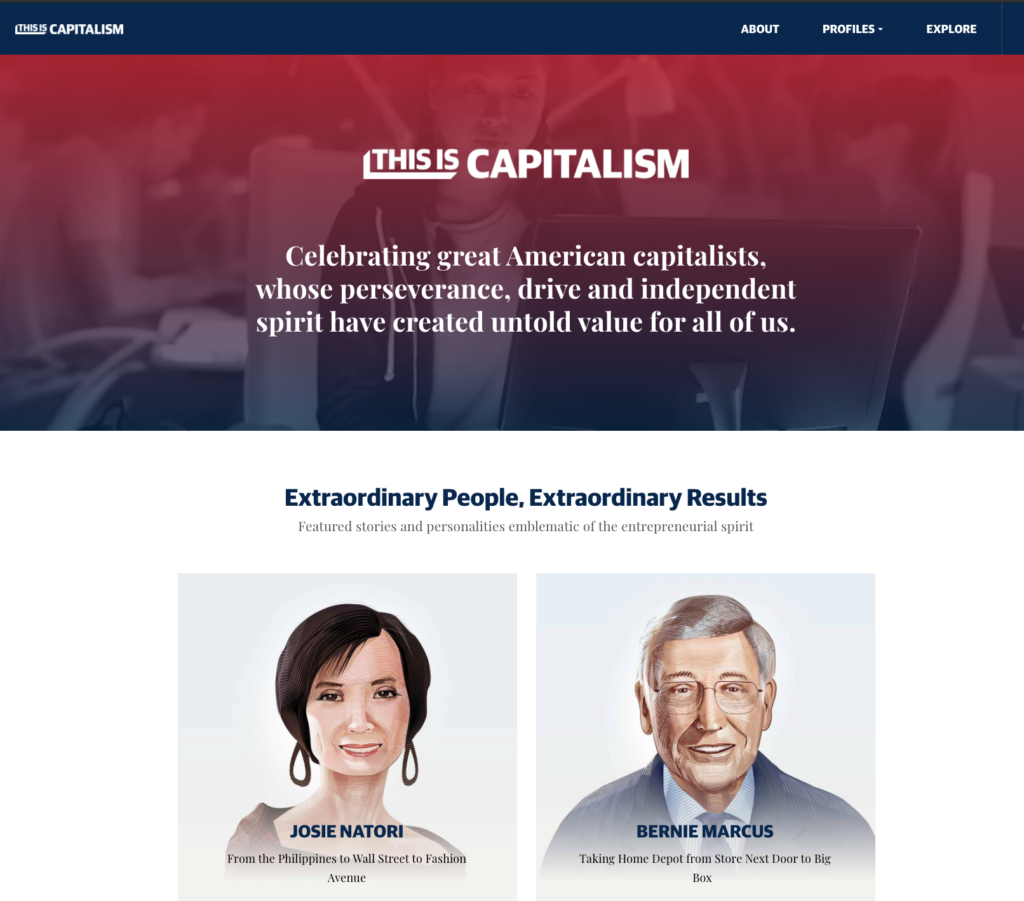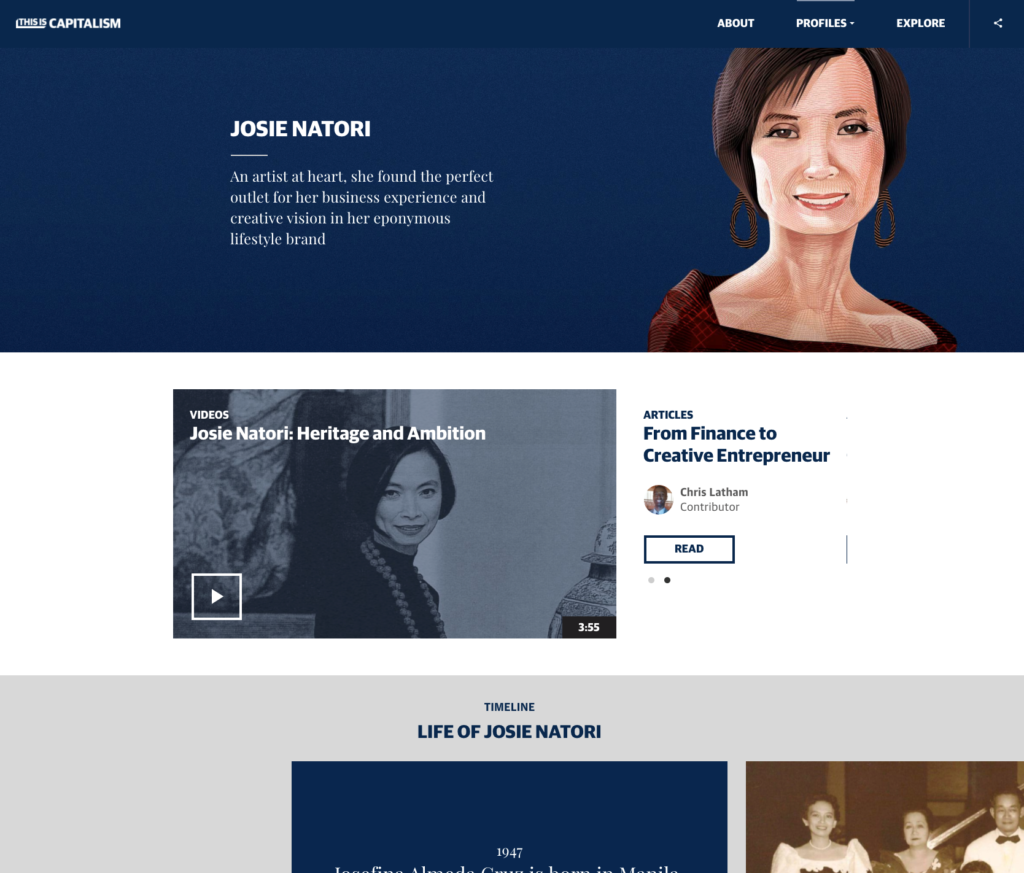Banking on Thought Leadership
Stephens’ Content: Strong Point of View on a Potentially Divisive Topic
Highlights of our analysis of Stephens’ thought leadership:
- Having a strong point of view on a potentially divisive topic
- Creating an interactive microsite for a campaign
- Telling bankers’ personal stories through Q&As
- One piece of unsolicited advice: Don’t commingle thought leadership and PR
Three Things We Like

1. Having a strong point of view on a potentially divisive topic.
It’s no secret that one of the hottest content trends of the past few years has been ESG (environmental, social, and governance), followed closely by D&I (diversity and inclusion). Most large financial institutions have invested a lot of resources in adding their perspectives about why these topics are relevant to the future of finance.
Regardless of how one feels about these topics from an investment perspective, most marketers believe that showing that your company is committed to corporate responsibility (however one chooses to define that) is helpful from a public relations and branding perspective.
But not all important topics enjoy such unanimous support in the public zeitgeist. And putting a stake in the ground about potentially divisive topics is how companies can truly establish themselves as thought leaders. Stephens seems to understand this.
Stephens has launched a “This Is Capitalism” campaign “to help educate people about our economic system” and “giv(e) the next generation the knowledge and education they deserve,” according to Stephens CEO Warren A. Stephens. Those words come from an essay he wrote titled “Financial Literacy: How We’re Failing the Next Generation.” The essay is powerful, well-reasoned, and pointed in its critique of the U.S. education system and the attitudes of younger Americans about capitalism. While I suspect that most of Stephens’ clients and prospects would agree with the essay, there is a chance that some people might take offense to the CEO’s views.
At WFC, we applaud Stephens for having the courage and conviction to champion a cause that may ruffle some feathers and for having a distinct point of view. Being a true thought leader requires being willing to initiate and engage in healthy discussions on topics that may not put you in the mainstream.
2. Creating an interactive microsite for a campaign.
Stephens has created a fantastic interactive microsite to house its “This is Capitalism” campaign. The purpose of the campaign is to “celebrat(e) great American capitalists, whose perseverance, drive and independent spirit have created untold value for all of us.”
The site has a separate URL (thisiscapitalism.com) and a separate look and feel from Stephens’ main site, and it makes for a great user experience. The site incorporates the right amount of video, interactive elements, and art to engage, but not overwhelm, the user.
Interactive microsites and landing pages have become much more prevalent recently; and that’s a great trend. But often we see financial services firms go overboard with the interactive elements and try to cram too much onto the page. Using “interactivity for the sake of interactivity” ends up distracting the user from the main story that the company is trying to tell. Kudos to Stephens for striking the right balance here.


3. Telling bankers’ personal stories through Q&As.
As we have written about previously, we’re big fans of Q&As as a form of thought leadership. Not only are they relatively quick and efficient to create, but they also provide a way to showcase your bankers and humanize your message.
Stephens regularly publishes Q&As with their public finance bankers. These two-page pieces typically focus on how the banker’s personal background and experiences contribute to his or her capabilities as a banker. For example, Associate Banker Melissa Walsh talks about how her passion for public education, which was spurred by her two-year stint with Teach For America in Pine Bluff. This window into her story enhances her perspective in advising Arkansas school districts on issuing debt.
One Piece of Unsolicited Advice:
Don’t Commingle Thought Leadership and PR
As much as we like Stephens’ Q&As and the CEO’s essay about financial literacy, we don’t like where they live on the website. These examples are listed under a general “News” page, along with general company announcements about new hires and sponsorships of professional golfers.
It’s better to have a designated section of the site for thought leadership content. Commingling it with public relations announcements undermines the credibility and objectivity that is important for true thought leadership. We believe in a strict separation of church and state when it comes to thought leadership and public relations.

Ready for Your Deep Dive?
Schedule your content audit. Want to know how your firm’s thought leadership and content marketing stack up against the industry’s best? Contact us to learn about engaging Wentworth Financial Communications to do an audit of your content’s strengths and areas for improvement.
Keep Exploring
See our thoughts on several companies we have recently analyzed or view the full archive.
Bank of America’s Content: Case Studies That Show Tangible Impact
Banking on Thought LeadershipEach week we examine a different investment bank’s content and highlight three things we like about their approach to thought leadership. Our goal is to help investment banking marketers learn about the best practices in thought leadership...
RBC Capital Markets’ Content: COVID Insights that Cut Through the Noise
Banking on Thought LeadershipEach week we examine a different investment bank’s content and highlight three things we like about their approach to thought leadership. Our goal is to help investment banking marketers learn about the best practices in thought leadership...
J.P. Morgan’s Content: Avoiding Dead Ends in the User Journey
Banking on Thought LeadershipEach week we examine a different investment bank’s content and highlight three things we like about their approach to thought leadership. Our goal is to help investment banking marketers learn about the best practices in thought leadership...



